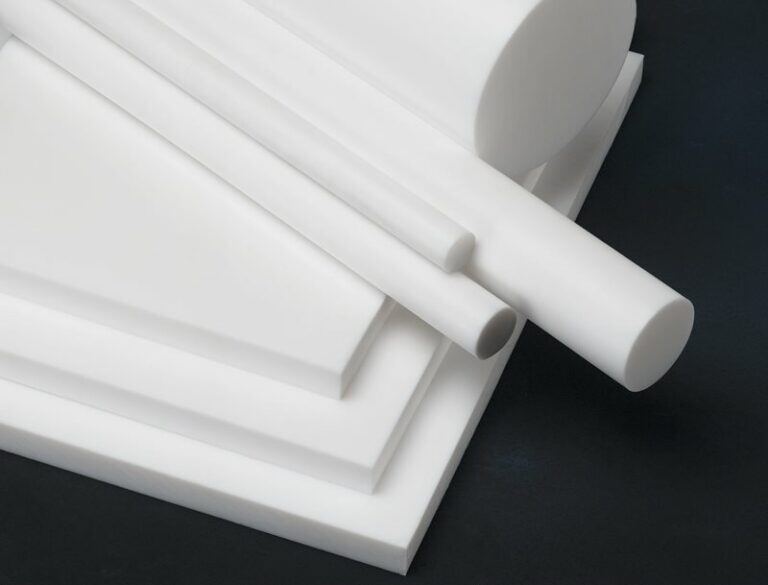- Materials
- PTFE

PTFE for CNC Machining
PTFE is a flexible, low-friction fluoropolymer known for its exceptional resistance to chemicals, weathering and high temperatures.
Please note
The information contained herein are typical values intended for reference and comparison purposes only. They should NOT be used as a basis for design specifications or quality control.
Design Tip
To minimize costs, reduce the number of part setups, inspection dimensions, or strict tolerances, and avoid deep pockets with small radii.
PTFE
PTFE (polytetrafluoroethylene) is a flexible, low-friction fluoropolymer known for its exceptional resistance to chemicals and weathering. It remains stable at temperatures as high as 500ºF, making it ideal for use in high-temperature settings.
Additionally, PTFE possesses excellent electrical insulating capabilities. It is available in various formulations, including unfilled, glass-filled, and bearing grades.
Performance Characteristics
- Extremely low friction
- Outstanding chemical resistance
- Good weathering resistance
- Performs well at elevated temperatures
- Soft and formable
Common Brands
- Teflon
- Rulon
- Fluorosint
PTFE Properties
- Mechanical Properties
- Thermal Properties
- Electrical Properties
- Optical Properties
-
Mechanical Properties
Tensile Strength 1,500 - 3,000 psi Tensile Modulus of Elasticity -- psi Tensile Elongation 100 - 200% Flexural Strength -- psi Flexural Modulus of Elasticity 72,000 psi Compressive Strength -- psi Hardness Shore D 55 Izod Impact 3.5 ft-lbs/in -
Thermal Properties
Coefficient of Linear Thermal Expansion 8.9 in/in/°F x 10-5 Heat Deflection Temperature (66 psi/264 psi) 250 / -- °F Max Continuous Service Temperature in Air 500 °F -
Electrical Properties
Dielectric Strength 400 - 500 V/mil -
Optical Properties
Light Transmittance -- % Haze -- %
